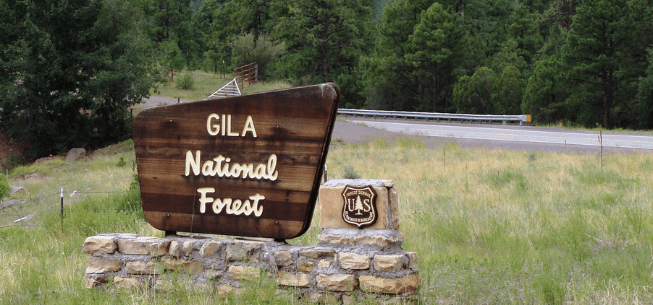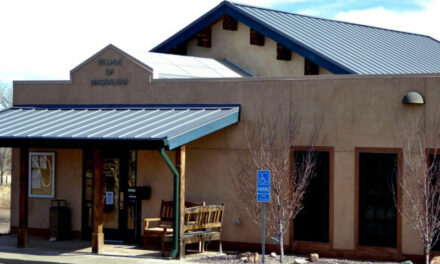
Courtesy Gila National Forest/U.S. Forest Service
The Gila National Forest is a fire-dependent landscape. This landscape requires periodic fire which helps reduce hazardous fuels, protect human communities from extreme fires, minimize the spread of pests and disease, provide forage for game, recycle nutrients back to the soil, and promote the growth of trees, wildflowers, and other plants.
Gila National Forest has a 30-plus year history of prescribed fire and managing naturally caused wildfires on the landscape. This land management strategy is centered on long-term forest health and that strategy includes reducing forest fuels and using prescribed fire on the landscape. A healthy forest is a resilient forest that undergoes fire occurrences on a regular basis.
The Gila NF conducts approximately 24,000 acres of prescribed fire every year. This helps out since after a prescribed fire is completed when a future wildfire reaches this area, the fire behavior will be more likely to burn as a less intense, more manageable surface fire due to the absence of accumulated debris and ladder fuels.
A prescribed fire is a planned fire used to meet management objectives. It is the controlled application of fire by a team of fire experts under very specific weather conditions to restore health to ecosystems that depend on fire. Specialists write burn plans for prescribed fires. These burn plans identify or prescribe the best conditions under which trees and other plants will burn to get the best results safely. They consider the temperature, humidity, wind, moisture of the vegetation, and conditions for the dispersal of smoke. All the conditions must be met before deciding to burn.
The Gila NF fire and fuels management personnel work closely with the Regional Office, National Weather Service and other partners and stakeholders to prepare for planning and igniting prescribed fire. We make sure that we have the right number of people, engines, and other resources to have a successful prescribed burn season as well as have enough resources in the event of a wildland fire. Many of the resources that the forests use for their prescribed burns are brought in from other forests throughout the country. This coordination is a closely monitored and planned exercise to ensure the safety of our wildland firefighters and public safety.
The Gila NF is ready to finish the 2021 Spring Prescribed Fire Season by implementing the Indian Peaks Prescribed Fire on the Black Range by April 21, 2021, and the Bar 6 Prescribed Fire on the Silver City Ranger District beginning the week of April 27. The Indian Peaks Prescribed Fire will be burning just over 10,000 acres and the majority will be in pinyon/juniper which needs heat and a prescribed level of wind in order to carry fire across the landscape.
The Bar 6 Prescribed Fire will be burning just over 4,800 acres and the majority will also be in pinyon/juniper and some oak brush. Fire will burn in a mosaic pattern across the land in the traditional way that is considered good fire. On the Bar 6 burn, there also needs to be that mosaic pattern with some high severity fire in that closed canopy of the pinyon vegetation type typical for the Burro Mountains. Coordination between the ranger districts has occurred so that resources are allocated wisely. Fire crews will be present to keep the fire from spreading rapidly while ensuring that the fire stays within the designated units.
Based on the rapidly changing conditions, the Gila NF will transition from prescribed fire to the implementation of fire restrictions. Every year the Gila NF continuously evaluates current and predicted weather, fuels moistures, relative humidity, fire activity levels, and available resources. We look at our neighboring forests in Arizona and New Mexico to see what the trends are for these conditions as well.
We cannot anticipate a date for when to restrict campfires but must look at the conditions about when to implement these restrictions. The forest is seeing an uptick in abandoned campfires, more than in past years. Despite our lookouts and fire prevention patrols, oftentimes when abandoned campfires occur they may not be visible for several days.
This delay in discovery often gives the fire time to grow and the delay also adds to the time it takes for forest level resources to respond. This trend of more abandoned campfires is one more factor that contributes to the need for fire restrictions. With the current and predicted weather trends, fuels moistures, etc. the Gila National Forest will be implementing fire restrictions on April 27.

















